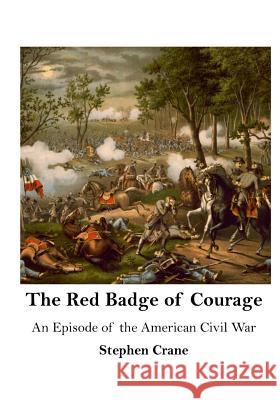The Red Badge of Courage: An Episode of the American Civil War » książka
The Red Badge of Courage: An Episode of the American Civil War
ISBN-13: 9781522928072 / Angielski / Miękka / 2015 / 136 str.
The Red Badge of Courage: An Episode of the American Civil War
ISBN-13: 9781522928072 / Angielski / Miękka / 2015 / 136 str.
(netto: 48,17 VAT: 5%)
Najniższa cena z 30 dni: 46,97 zł
ok. 13-18 dni roboczych.
Darmowa dostawa!
The Classic War Novel by American Author Stephen CraneThe Red Badge of CourageAn Episode of the American Civil Warby Stephen CraneStephen Crane published his first novel, Maggie: A Girl of the Streets, in March 1893 at the age of 22. Maggie was not a success, either financially or critically. Most critics thought the unsentimental Bowery tale crude or vulgar, and Crane chose to publish the work privately after it was repeatedly rejected for publication. Crane found inspiration for his next novel while spending hours lounging in a friend's studio in the early summer of 1893. There, he became fascinated with issues of Century Magazine that were largely devoted to famous battles and military leaders from the Civil War. Frustrated with the dryly written stories, Crane stated, "I wonder that some of those fellows don't tell how they felt in those scraps. They spout enough of what they did, but they're as emotionless as rocks." Returning to these magazines during subsequent visits to the studio, he decided to write a war novel. He later stated that he "had been unconsciously working the detail of the story out through most of his boyhood" and had imagined "war stories ever since he was out of knickerbockers."At the time, Crane was intermittently employed as a free-lance writer, contributing articles to various New York City newspapers. He began writing what would become The Red Badge of Courage in June 1893, while living with his older brother Edmund in Lake View, New Jersey. Crane conceived the story from the point of view of a young private who is at first filled with boyish dreams of the glory of war, only to become disillusioned by war's reality. He took the private's surname, "Fleming," from his sister-in-law's maiden name. He would later relate that the first paragraphs came to him with "every word in place, every comma, every period fixed." Working mostly nights, he wrote from around midnight until four or five in the morning. Because he could not afford a typewriter, he carefully wrote in ink on legal-sized paper, occasionally crossing through or overlying a word. If he changed something, he would rewrite the whole page. He later moved to New York City, where he completed the novel in April 1894.











